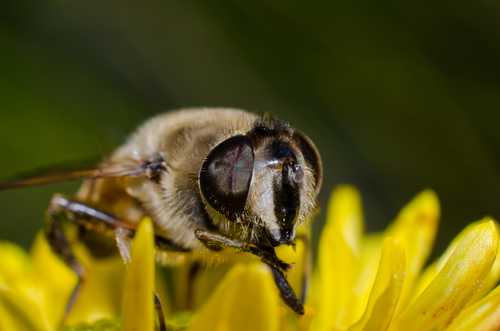
Bee Researchers Make Friends with a Killer
for Scientific American(For full article, click here)
In the Mexican highlands, nestled between towering cliffs blanketed with verdant temperate jungle, is the tiny mountain town of Tepotzlan. Home to an ancient Aztec outpost high in the mountains and inhabited with monkeylike creatures called coatis, it is the definition of quaint, picturesque Mexico.
It’s also a great place to buy honey. Most honey you buy on Mexican streets isn’t the genuine article—it is honey-flavored syrup. For the real stuff, you have to go down a small side street in Tepotzlan and wander around asking for the “mujer de miel”—the honey lady. Eventually you find her house, a bland wall facing the street, guarded by a massive angry dog. But inside, her courtyard is friendly, lined with bushyplants and flowers of every type. The honey lady is thin and elderly but sharp as a tack. Ten dollars buys you the best honey in town and a few minutes to talk beekeeping.
Bees in Mexico, she says, aren’t what they used to be. Her hives don’t produce like they once did and entire colonies often fly away before she can even harvest their honey. “The problem,” she says, “is the Africanized bees.”
It’s been almost 30 years since Africanized (often called “killer”) bees first landed in Mexico. It took them just seven years to take over the country and cause an extended media panic in the U.S. In the end, they invaded southern states such as Texas and Arizona but were halted by colder winters north of there.
For most of us, the story ends here. European honeybees, favored by most beekeepers in Latin American and the U.S., however, have pretty much disappeared from Mexico and points south—leading to steep declines in the collection of honey. Except that’s not the end of the story.
Although Mexico’s honey exports initially dropped by more than 50 percent when the Africanized bees arrived, production has since recovered to 75 percent of historical levels. During that time the Africanized bee has built a sort of fan club among many Latin American researchers. “In my experience these bees are better producers than European ones,” Javier Quezada-Euán, a bee expert at the Autonomous University of Yucatán, wrote in an e-mail. “[But] it is much easier to blame the bee than the bad management techniques.” Quezada-Euán and others believe the arrival of the Africanized bee in the Americas may turn out to have been blessing in disguise.
Accidental invasion
Apis mellifera, or the common honeybee, has dozens of subspecies originating in Africa, Europe and Asia. The most well known is the Italian honeybee (A. mellifera ligustica), which is found in most U.S. beehives. It’s a fat, docile bee that stores massive amounts of honey so as to wait out long winters. Groups of these bees tend to look for the big haul, using complex communication signals to descend on rich clusters of flowers all at once.
But just as many (if not more) honeybee types come from Africa. In the 1950s Brazilian researchers brought one of those—A. mellifera scutellata—to a laboratory to help breed a better, hardier New World bee. But the African bees escaped. These so-called “killer” bees were faster, more scrappy and far more resilient. They breed fast, are less picky about flowers, and move quickly—abandoning hives and splitting them like dividing cells whenever they have enough honey. And they defend their hives with a passion.
Far more at home in the tropics than the Italian bees, they swept through 20 countries, moving 300 to 500 kilometers north per year and arguably became the most successful invasive species of the 20th century. They hit Mexico in 1986 and by 1993 had pushed out the European bee. “The dream of working with European bees is part of the past, at least for Mexican beekeepers,” says Ernesto Guzman, head of the Honey Bee Research Center at the University of Guelph in Ontario. “If you want to make comparisons between then and now, beekeeping was more profitable, the cost of production was lower. It was more pleasant to work with European bees, there were less stinging incidents.”